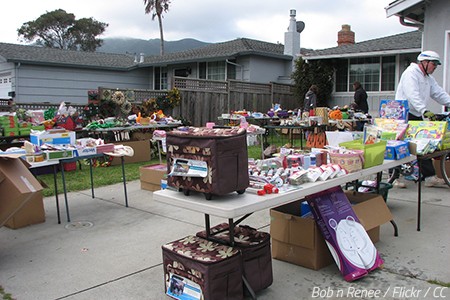The process of moving house is an interconnected series of move-related tasks that serve one common purpose – to get you, your family, and all your possessions from Point A to Point B. But here’s the hardest part – you and anyone involved in the move should sustain no damage in the process and your household items should not get damaged while being transported between the two homes.
Since you must have already started working on the jobs in your personal moving checklist, have you noticed how some tasks are relatively easy to complete? Those no-brainers offer some kind of breathing space for your busy schedule while other tasks will certainly give you a run for your money.
The fact that some household items are much harder to pack, transport, and unpack than others cannot be really disputed. How could you possibly compare moving your book collection to moving your antique piano with you? You can’t. And what about moving big and heavy furniture pieces? Taking your pool table with you? Moving a hot tub to a new home?
Wait a second – what about moving a big and heavy safe to another home without using professional assistance? It’s important to know in advance that moving a big safe by yourself can be a true challenge.
Here’s how to move a heavy safe by yourself.
What to know before moving a large safe
Before you even decide to complete the extra challenging and dangerous job of moving a safe without professional movers (but with a few reliable friends, of course!), you should be aware that there are a bunch of important points to take into consideration first.
Rank safety above all
Safety should be your primary concern. After all, we’re talking about the best ways to take a huge metal beast of a safe and move it safely to another home altogether. If you own a much smaller portable safe for important documents and cash, then you don’t really have anything to fret over – you just take it with you as if it were a metal packing box. In reality, that’s all it is, isn’t it – a much more secure and heavier metal box where you store really essential and expensive items.
The problem here is not really how to move portable lightweight safes, such as document safes, data safes, and jewelry safes. The real problem you may be facing when moving to another home is how to move a huge safe – your High-Security commercial safe that could weigh up to 500 lb, or even more. And when you add extraordinary weights and large dimensions to the world of moving, things can go from easy to hard, and then from safe to dangerous in mere seconds.
Thus said, if you do own a commercial safe that was designed to offer the ultimate protection against theft (burglar-resistance), fire (fire-resistance), and other forces of nature (environmental resistance), then your best bet is to hire professionals to do it for you. Re-assess the whole relocation situation with a clear mind and keep in mind that your monstrous safe is surely no joke to be moved around safely.
Solve the safe-moving dilemma
Big. Heavy. Dangerous. Sounds like a safe thing. Or does it?
Although you do realize that the best way to move a large and heavy safe is to hire the services of specialty movers, the thing is that, under specific circumstances, you may be tempted to complete that daring moving task without any professional help. Such circumstances may include:
You only need to move your heavyweight safe to another spot in the same room;
You want to move your High Security safe to another room inside your own home or office;
You have previous experience moving huge safes around, and you know exactly what it takes to get the tough job done with no accidents of any kind;
You have a group of reliable friends whom you know you can trust to help you complete successfully that risky relocation task;
You have the proper safe-moving equipment that gives you confidence that things will turn out to be okay in the end;
The price quotes you have received to have your huge strongbox moved to its new resting spot are not much to your liking, so you decide to save some money by moving the safe by yourself.
So, if you feel like you’re really up to the task, then you should get familiar with the necessary preparations before you get down to the job at hand. Follow the safe-moving checklist below to get ready to move your safe by yourself.
What to do before moving a heavy safe
It’s important to understand that the successful relocation of your personal safe depends primarily on how well you prepare for the challenge ahead.
Secure the proper safe-moving equipment first if you want to have a fair chance of pulling off that tough task. As far as equipment for moving a safe goes, you’re going to need a wheeled helper – a heavy-duty appliance dolly (the “L”-shaped two-wheeler which is also known as a hand truck). Also, you’re going to need a few supporting straps or a considerable length of rope to secure the heavy safe once it’s loaded onto the dolly, as well as a number of thick moving blankets.
Measure up your safe. Before you go ahead and rent the above equipment for moving a safe from a local moving company, make sure you know the dimensions and exact weight of your home or office safe so that the movers know what type of moving dolly to lend you. The specifications of your strongbox should be clearly noted in its documentation. If not, as long as you know the model of your safe, you can always look up that specific data on the Internet.
Confirm, again, that your helpers will show up on the scheduled day and will give you a hand with that super heavy monster of a safe that you own. This is the make-it-or-break-it moment of your bold decision to move a safe by yourself – if you can’t seem to secure at least 4 helpers for your safe-moving cause, then you should just give up on the idea and seek professional assistance. Do not attempt to move your heavyweight safe entirely on your own as you’re risking not only costly damage to your property but serious personal injury as well.
Where’s the heavy-duty moving dolly?
Consider emptying your safe to make it lighter, especially if it happens to be a heavy-duty gun safe. Besides, the unorthodox movements that the valuables inside your safe will be subjected to may pretty much damage them, so you are advised to remove all the items from your safe box before you begin the moving procedure. Once you get those valuables out, be sure to pack them separately and then find the best way to move them safely.
Be careful how you dress up for the occasion. Yes, your clothing and footwear will probably be the least of your concerns, but trust us – they matter. Avoid baggy clothes and long jewelry pieces that may get caught on something and compromise the safety you’ve worked so hard to achieve. In fact, what you wear, regardless of whether you’re moving your safe to a new home or moving it to a new place around your current home, should offer maximum comfort and utmost protection for your body. Choose the most comfortable pair of closed shoes you have and double-check to see if their soles provide the excellent traction you need. Moreover, do not begin the safe-relocation procedure before you have a high-quality pair of work gloves on your hands for a better grip and even better protection for your fingers.
Before you begin the safe-moving operation, you need to be perfectly clear on what you want to do and how you will do it. In other words, work out your relocation strategy to the smallest detail. Walk the intended path beforehand and make sure there are no obstacles of any kind that can make things riskier than they already are. Identify any dangerous zones and make them safe. Plan each safe moving step in your head and don’t keep that exit strategy to yourself – share it with your friends so that all of you are on the same page. If the escape route includes tight corners, narrow corridors, or flights of stairs, then re-evaluate the whole situation and don’t hesitate to seek professional assistance if the risks appear to be too high.
Take precautions to keep your home damage-free while wheeling your huge safe around. Place protective coverings along the exit route (film protectors, old carpets or blankets, or simply large pieces of cardboard). Also, tape thick moving blankets over tight corners, staircase banisters, wall frames, or any other places which you think might get into contact with the big safe during transportation.
If you’re moving a safe to a new home, you’re going to need a moving van for its actual transportation. A borrowed pick-up truck or a rental moving vehicle should do just fine – only make sure that that vehicle is equipped with a loading platform to make things easier and safer for everyone.
How to move a safe by yourself (without professional movers)
Gun safes are especially tricky to move for obvious reasons.
Now, the moment you’re done with the preparation stage, it’s time to get down to the serious business of moving a safe with a dolly.
This is the right time to forget about all kinds of unusual and plain dangerous ways of transporting a large and heavy safe, like moving a safe with golf balls, skateboards, or metal pipes. For best results, stick to arguably the greatest invention in human history – the wheel.
So, how to move a safe with a dolly? Follow these tips for moving a safe to keep things safe!
EMPTY the safe of its contents – any valuables you have in there, firearms, ammunition, and so on. The idea is not only to reduce the total weight of the strongbox for easier and safer handling but to eliminate the risk of damage while those valuables are being moved around in the safe. You should pack and transport those valuable items separately;
CLOSE the door of your safe and lock it in place. Remember that accidental opening of the safe door during transport can do plenty of damage, including to the safe itself. Having the safe door open during the move can also lead to various personal injuries, so double-check the safe door is securely closed and locked before you continue;
WRAP your safe completely with moving blankets until no metal part is visible. Then, tape the protective covers in place with packing tape, straps, or rope. Padding your safe before moving has a couple of distinctive purposes: 1) it keeps the large and heavy metal safe protected from damage, and 2) it keeps floors, walls, and various household items from getting damaged if the safe happens to bump into them accidentally on the way out of the house;
ALIGN the appliance dolly right by the back or by one of the sides of the safe. You should never load the heavy safe onto the heavy-duty dolly from its front for fear of damaging its door and opening mechanism;
TILT the safe, very slowly, with the help of your friends and slide the heavy-duty dolly underneath the bottom of the stronghold from the rear or from the side. Do this particular task with great caution;
WRAP the entire body of the safe with straps or rope and then fasten it tightly onto the dolly. This is probably the most important step when moving a safe – the heavy and bulky metal structure must remain firmly attached to the moving dolly at all times;
LOAD the heavy safe onto the dolly is what you should do net. How? The moment your safe is perfectly secured to the dolly with straps or rope, use all the manpower you’ve got to tilt back the two-wheeler so that the entire weight of the strongbox rests balanced onto the rubber wheels of the L-shaped first-class lever;
HAVE at least 3 of your friends support the safe onto the moving dolly while you’re already making your way out of the house or you’re heading towards the pre-selected spot inside your current home;
GET your helpers to keep the strapped-up safe steady at all times just to make sure things are running as smoothly as possible. If possible, assign a person to walk a few meters before you and warn you of any potential trouble along the way;
REMEMBER this rule: no one should be allowed to make any sudden or unexpected movements as they might confuse the rest of the helpers, or even throw them off balance. Sharp turns or bumps along the way could actually cause the safe to fall off the dolly, so avoid such tricky sections as best as you can;
KEEP this in mind: moving a safe downstairs or upstairs is a risky business and if you’re not sure how to do it, then don’t do it at all. The main idea is to go down or up just one little step at a time while the safe is being supported by as many persons as possible;
Choose the safeR way to move your safe safely.
USE the loading ramp to wheel up the loaded moving dolly when you’ve made it safely to the awaiting moving vehicle Or even better – use a motor-driven ramp to go up to the storage space;
GET the strapped safe against one of the vehicle sides when you’re inside, or strap it securely to survive the bumps of the road ahead. Use as many straps and ropes as you deem necessary to achieve complete immobilization until the new home is reached;
REPEAT the above steps for moving a safe in reversed order the moment you get to your new residence.
IMPORTANT: Safety is your top priority when moving a safe to a new house. Do not risk your health or that of another person if you’re not 100% sure that you’re up to the challenge. When in doubt, do the sensible thing and turn to experienced professionals who know what it takes to move a large and heavy safe.
The post How to Move a Safe By Yourself: Stay Safe! appeared first on The Moving Blog.







